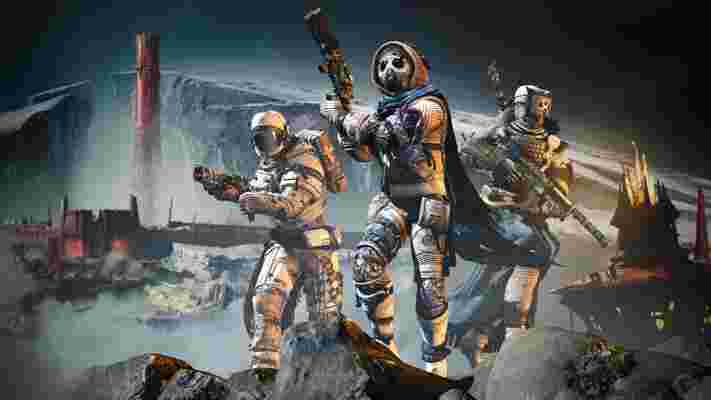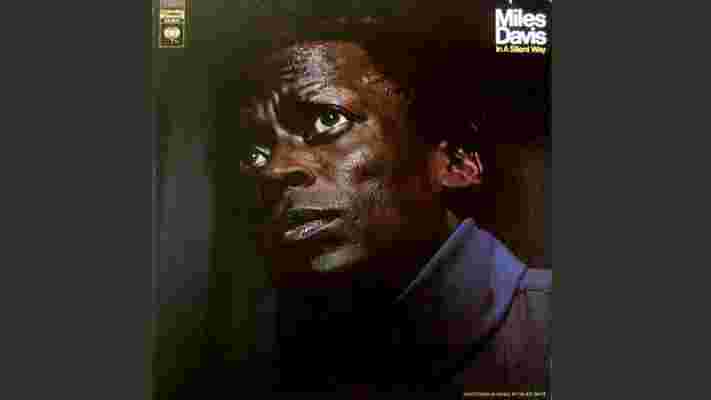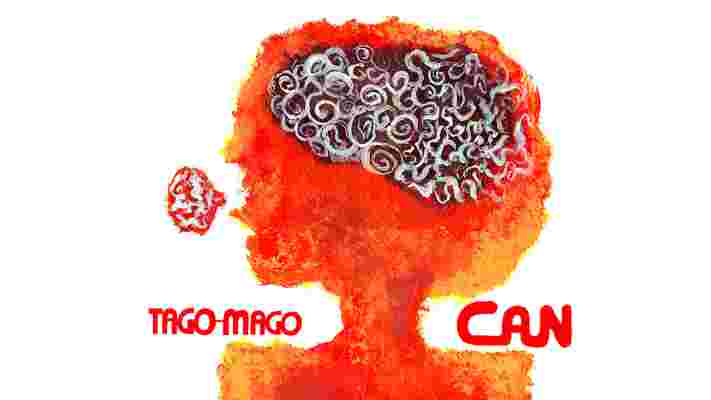I'm not easily impressed, and I'm also easily bored - as a tech reviewer, this cocktail means I can shrug off super-fast chipsets, wonderful cameras and amazing-looking screens as though I couldn't care less. But there's one Amazon Kindle feature that keeps me constantly pleased.
I've been using the Amazon Kindle Oasis for going on three years now. That makes it one of the few gadgets I've used past the initial test period, alongside my iPad Pro (2018) and Sony WH-100XM3 headphones.
And that's not by accident either, and not simply because I like reading. I actually prefer physical books (I'm a literature student hipster, they'd revoke my degree if I said otherwise), but the Kindle has an unexpectedly amazing feature that I bet you don't use at all: it does PDFs.
The PDF viewer
You can convert PDFs from the internet and send them to your Kindle very easily - we've got a guide on it here that you can use . On its own, it's not a groundbreaking feature. But hear me out.
As someone who doesn't have the disposable income to spend on new books (I always buy my physical ones second-hand), I avoid the Kindle Store. But this PDF feature gives me an incredible new way to use the Kindle ereader that I wouldn't otherwise.

I'm currently reading The Strand Magazine, a classic short story periodical published from the mid-1800s to the mid-1900s. It's impossible to find physically, and tricky online, but luckily the fantastic Project Gutenberg digital library has loads of issues available. I can easily download Strand issues and send them to my Kindle to read at my leisure.
I've done this for loads of classic novels and novellas over the years - in lockdown I really got into the works of Jules Verne, H.G. Wells, Jane Austen, Mary Shelley and Edgar Rice Burroughs (yeah, four sci-fi / adventure / fantasy writers, and one that's the stark opposite).
Gutenberg lets me download free copies of classic (and some less-than-classic) works by these authors, and gives me mileage for my Kindle that I otherwise wouldn't get.
If I didn't have the Kindle, I don't think I would have read the Strand Magazine, for example. sure, I could still download the PDF and read it on my PC or phone, but that's not exactly the same. Simply being able to read something like this free on a device designed for reading makes it that much better.
I can't get over it
The commercial and capitalist tech industry is bent on selling you things. You buy a phone, then buy apps and accessories for it. You buy a games console, then buy games for it. You buy a camera, then buy lenses and tripods for it.

It's gotten to the point where loads of people define themselves by the gadgets they spend money on. There are Android fans versus iPhone fans, PlayStation fans versus Xbox fans, Windows fans versus Mac fans.
Usually, the main way to make the most of an expensive gadget is... to spend more money on it. And as a cash-strapped 20-something, I don't really have much of that.
Tech companies want your money,- it's no secret - which is why I'm so surprised that I still have a free wonderland of books, plays and poems at my disposal. I can get countless hours of entertainment without having to spend a penny.
Every time I know someone who buys a new Kindle, or I write a guide on Kindles around Black Friday or Christmas, or I do any coverage at all about new Amazon ereaders, I make sure to sing from the rooftops about this PDF conversion feature.
It's one of the few times in the tech gadget world where you can really get something for nothing, without having to sacrifice money or data or time to get it, and that surprises me and pleases me in equal measure.
In fact, I always feel a little cheeky sending free books to my Kindle, and it wouldn't surprise me - though would certainly disappoint me - if Amazon looked into monetizing this feature. But for now, I'll enjoy it while it lasts, and I'd encourage you to do the same.
Why Sony’s Bungie acquisition shouldn’t worry Microsoft
Another week, another major acquisition in the video game industry. This time it’s Bungie that’s been bought out , with Sony announcing that it had acquired the Destiny 2 developer for $3.6 billion on January 31.
Sony’s buyout of Bungie could be seen as an immediate response to Microsoft’s seismic takeover of Activision Blizzard (which is now being investigated by the Federal Trade Commission). But it’s actually a more complicated deal, and one that’s unlikely to affect Xbox gamers directly – if at all. It is, however, a deal that makes logical sense for Sony, and for PlayStation as a whole.
The key point to keep in mind regarding Sony’s Bungie acquisition is that the Destiny 2 developer is set to remain completely independent. The studio has made it clear that Destiny 2 , including any future in-game content or new IP created by Bungie, will not be exclusive to PlayStation consoles. At the very least, it will be down to Bungie’s discretion where its future games and content end up, not Sony.
In an FAQ on Bungie’s website, the company responded to questions about whether future games in development will become PlayStation exclusive. “No,” the statement reads. “We want the worlds we are creating to extend to anywhere people play games. We will continue to be self-published, creatively independent, and we will continue to drive one, unified Bungie community.”
Destiny calls

That’s pretty clear-cut, then, and it means that Destiny 2 won’t suddenly become a PlayStation exclusive, nor will Sony be ordering Bungie to get to work on a Halo-killer anytime soon. We also won’t see any of Bungie’s games siphoned off onto Sony’s subscription services. Bungie will continue to operate independently, just like before the acquisition.
That’s a very different situation from Sony’s recent acquisitions of Returnal developer Housemarque, remake masters Bluepoint Games , Playroom maker Firesprite, PC port specialists Nixxes Software, and God of War support studio Valkyrie Entertainment. These studios are now tasked with developing exclusive content for PlayStation systems (and potentially PC), which won’t be available anywhere else.
And that fundamentally means that Sony’s Bungie buyout isn’t the same as Microsoft’s pending acquisition of Activision Blizzard. We already know that the Redmond-based company is planning to add as many Activision Blizzard titles as it can to Xbox Game Pass in the future.
Microsoft’s recent Bethesda acquisition has also shown that any acquired studios will slowly begin to make exclusive games for Xbox and PC. Starfield , Redfall , and The Elder Scrolls 6 are no longer coming to PlayStation, for example, and while Call of Duty will remain on PS5 for the foreseeable future, there’s no guarantee that will always be the case.
A long-term approach

The impact of Sony’s Bungie acquisition won’t be felt directly by Xbox gamers, then, but rather Sony is banking on Bungie’s unique expertize to help it develop new games in an area where it’s arguably lagged behind: games as a service (GaaS), which are also known as live-service games. We now know it's planning to release 10 live-service games before 2026 .
Microsoft already has several successful GaaS titles like Sea of Thieves , State of Decay 2, Halo Infinite , Forza Horizon 5 in its portfolio, which receive frequent updates and have long life cycles.
Sony, meanwhile, has established itself as the leader of single-player narrative-driven titles, like The Last of Us 2 and Spider-Man: Miles Morales . These games can often be completed after a few hours, and offer little long-term longevity other than the promise of future downloadable content.
In buying Bungie, Sony now has a developer that not only knows how to create live-service games but is also responsible for creating one of the most popular GaaS titles to date. That’s a huge positive for Sony, and is an investment that will come to fruition in the years to come.
Gestation period

Sony’s Bungie deal is odd in many respects, but ultimately proves that Sony is confident in its existing studios. It doesn’t need to make Destiny 2 and future Bungie games exclusive to its platform to entice more users; games like Gran Turismo 7 , Horizon Forbidden West , and God of War: Ragnarok already accomplish that. Instead, Sony is banking on adding another feather to its already impressive plumage by creating compelling live-service games using its existing or new IP.
Microsoft needn’t worry about Sony’s Bungie acquisition, then, but at the same time it’ll have some new competition in a space that was previously only occupied by other third-party publishers. And competition is fundamentally always a good thing for gamers.
10 albums we wish were available in Spatial Audio
If you want to know the most worthwhile Spatial Audio mixes currently available to blast into your headphones , Techradar’s list of the 10 best is an unbeatable place to start. For showcasing what makes Apple Music's Spatial Audio worthwhile where music, rather than movies, is concerned, these selections are outstanding.
That’s all well and good. But as with every new music format, it’s more often than not the long-established and the obviously great who get first dibs. And we don’t think that’s right - after all, Fleetwood Mac (to choose an example not entirely at random) have loads of great songs and are deeply popular to this day - but it doesn’t automatically follow that Fleetwood Mac songs will a) sound better in a Spatial Audio mix, or b) they’re the best songs for demonstrating just what Spatial Audio is capable of.
The list of albums that are deserving of the Apple Music Spatial Audio treatment is, of course, both extensive and subjective. But if we’re writing a wish-list, we have to start somewhere. Right? So here are 10 albums we’re convinced could make Spatial Audio seem like the only way to listen to music…
1. Miles Davis - In A Silent Way

At the time of this album’s release, Miles Davis was a towering figure in American music and debate about In a Silent Way raged. Is it jazz? Is it rock? It’s definitely electric… And it was edited down from a single three-hour session by producer Teo Macero - is that even allowed?
What In a Silent Way unarguably is, though, is the sort of open, spacious and precise recording that is crying out for the Spatial Audio treatment. The idea of being right in amongst all that virtuosity, all of that extraordinarily lyrical playing, all those poignant murmurs and silences, all that warmly analog tonality (and all that endlessly repeating, relentless hi-hat playing), is compelling.
2. Can - Tago Mago

For a band made up of such accomplished musicians, there was always a very agreeable looseness to Can. Many of their most celebrated recordings emerged from seemingly endless jam sessions, and sometimes - throughout Tago Mago, for example - it really shows.
There are many reasons this album would suit a Spatial Audio mix, with the numerous fine details and transient sounds occurring in what’s currently the background high among them. But most of all, the idea of sitting right there on Jaki Liebezeit’s drum stool while he demonstrates his absolute mastery of the kit is almost too exciting to bear.
3. The Upsetters - Super Ape

The late, lamented Lee ‘Scratch’ Perry was an acknowledged master of the recording studio, capable of extracting the most remarkable and singular sounds from the TASCAM 8-track in his legendary Black Ark studio in Kingston, Jamaica.
The fundamental sonic signature of dub reggae - subterranean bass, never-ending resonance and reverb, bone-dry drums and, most of all, massive empty spaces - is almost entirely Perry’s invention, and Super Ape (credited to his studio band The Upsetters) is a leading example of the type. And it’s made for Spatial Audio, which is so adept at separating and individualizing specific elements of a recording. Sometimes the absence is as important as the presence, as a Spatial Audio mix of this album would prove. I guarantee it.
4. The Smiths - The Queen is Dead
Before Morrissey became a tinfoil-hatted irrelevance, he was the darkly hilarious Alan Bennett of indie. And before Johnny Marr became a master of the Rickenbacker 330 he was, well, a master of the Rickenbacker 330. For a period in the middle of the 80s, The Smiths were the absolute embodiment of indie - preeminence they achieved thanks to an unbeatable combination of deft musicianship, superior writing and skilful production.
This album is already alive with the sensation of musicians operating as a single unit, bearing down on the music as one entity and giving it flight as a result. A Spatial Audio mix could only enhance their impact, allowing each carefully considered strand of the recording to be spotlit even as it integrates seamlessly into the recording as a whole.
5. PJ Harvey - Rid of Me
By the time her second album was released, Polly Jean was already preparing to disband her eponymous trio and go it fully alone. But before that happened, she (and Island Records) enlisted the singular talents of Steve Albini to ‘record’ (not ‘produce’, goodness me no) Rid of Me .
If it’s rawness you want, aggression and attack, this album has it in spades. Albini’s insistence in festooning the recording studio with microphones to capture every shred of information, resulted in a sound genuinely like no other. If Harvey’s assertion that Albini is “the only person I know that can record a drum kit and it sounds like you’re standing in front of a drum kit. It doesn’t sound like it’s gone through a recording process or it’s coming out of speakers” holds true in stereo, imagine what it would sound like as a Spatial Audio mix.
6. The Roots - Things Fall Apart
The Roots’ insistence on an organic, instrument-based sound that could be convincingly reproduced on stage is not the only thing that set them apart from the majority of turn-of-the-century hip-hop outfits, but it didn’t do any harm. And when it’s combined with an absolute torrent of creativity, the result is the timeless Things Fall Apart.
There’s so much going on during the course of this record, with competing elements both where rapping and its musical backdrop are concerned. A sympathetic Spatial Audio mix would allow proper insight into the cut’n’paste elements, Questlove’s whip-crack drumming, Black Thought’s peerless flow… In fact, the more I think about it the more I insist it happens.
7. Explosions in the Sky - The Earth is Not a Cold Dead Place
When a ‘pop’ record is just as oppressive as it is spaciously airy, when it’s entirely instrumental, when its 45-minute running time is long enough for just five tracks, and when its need for significant dynamic headroom is as pronounced as it is here, well… surely it’s the sort of thing Spatial Audio was made for?
So much of what makes The Earth is Not a Cold Dead Place a noteworthy recording is the attention paid to harmonics, to the decay of notes, the actual, literal sound . And the more space these elements have to stretch out, the greater the distance between individual sounds, the more immersive and absorbing a recording it will become.
8. Sergei Prokofiev/Evgeny Mravinsky/Leningrad Symphony Orchestra - Romeo and Juliet Suite 2
Yes, it’s a crowd-pleaser and one of the greatest hits of modern classical music (you know an orchestral piece is relatively contemporary when it includes saxophones), but there’s a reason for that: Romeo and Juliet is a work of straight-ahead genius.
Orchestral music benefits no end from the Spatial Audio treatment. The layout of the stage, its width, depth and relative height are made explicit rather than hinted at (as they are in stereo). And this specific recording in particular would sound spectacular as a Spatial Audio mix - not only would the tiny inputs from whoever’s playing the triangle at the back of the stage become more pronounced (for example), whoever is coughing and shuffling in their seat in the audience could be identified and punished. Unless some sort of statute of limitations applies, of course.
9. Burial - Untrue
There’s something ghostly and trance-like about Untrue - if ‘falling asleep on the night-bus and incorporating the external sounds into your dreams’ has an audio equivalent, this album could well be it. It’s not easy to be soothing, unsettling and downright strange over the course of a single album, but Untrue is all of these things, all at once and all the time.
It’s this tangible sense of otherness and of transience that would most obviously benefit from the Spatial Audio treatment. Burial is shooting for a feeling of impermanence and dislocation here, and the amount of (no pun intended) space that a Spatial Audio mix provides can only accentuate it. Plus being in amongst those beats would never get old.
10. Eartheater - Phoenix: Flames are Dew Upon My Skin
For her fourth album, Alexandra Drewchin ditched the rather overwhelming electronic basis of her previous recordings in favour of sweet-and-sour string arrangements. Her startlingly limber, versatile voice also grew in prominence, and the result remains one of this decade’s most remarkable albums.
No doubt a Spatial Audio mix would render it more remarkable still. To be among the massed string instruments, with the harp given its own little platform, while Drewchin croons and howls and mutters her stories. To be able to make sense of her wordplay, rather than grasping at snatches of it as it’s engulfed by keening and scraping instrumentation. To find out exactly what is going on here. Is it too much to ask?